Best film in 2025: our picks of the best 35mm film, roll film, and sheet film for your camera
Want to know what the best film you can buy in 35mm, medium format, and large format is? Read on!

Looking for the perfect film for your camera? With so many options available, it can feel overwhelming - especially if you're just starting out. The key is to choose the right size of film for your camera, consider the box speed, and decide whether you want to shoot in color or black and white.
To make things easier, we've put together this guide to help you navigate the choices. Whether you're using a 35mm camera (the most common format, equivalent to full-frame in digital photography), a medium format camera (which takes 120 film), or even a large format camera (which uses sheet film), we've rounded up the best films you can buy. From timeless classics to modern, experimental emulsions, there's something for everyone.
Note that this guide focuses on traditional film stocks, not instant film like Polaroid. If you're looking for instant options, check out our guide to the best instant cameras instead.
Scroll to the bottom of this page for a deep dive into the different types of film, or jump straight to our top recommendations below. And if you need a camera to go with your film, don’t miss our comprehensive guide to the best film cameras!
The quick list

Portra 400 film has gained a passionate following amongst the film community thanks to its flexibility when shooting in different lighting conditions and its beautifully rendered grain and colors.

Ilford HP5 Plus is an evolution of a film that's been a favorite among black and white photography photographers for decades. It's an all-rounder, offering reasonable speed, good contrast, and definition.

A widely available film, Fujifilm Superia X-TRA 400 is a good 35mm choice for all purposes, especially travel. It handles indoor and outdoor lighting well, and exhibits minimal grain.

Released in 2023, Harman's Phoenix 200 hopefully represents a new lease on life for color film. It's a little rough around the edges, but also has an undeniable charm to it.

One of the most widely-available color print films available today - with an ISO400 speed that makes it a sensible choice for a wide variety of subjects.

If you're using large-format film cameras, Kodak Ektar 100 is one of our favourite 5 x 4" color sheet films. With high saturation and sharpness, it's ultra-versatile.
Best 35mm film
With so many 35mm films on the market, we've had to be really selective about which ones we include. Some have stood the test of time while others are complete newcomers that offer funky colors to completely change the look of your image. To make this guide easy to navigate we've split it into three sections: color negative, black and white, and color transparency film. 35mm is often referred to as '135' so if you see that number instead, just remember we mean 35mm film!
35mm color negative film

Specifications
Reasons to buy
Reasons to avoid
Portra 400 film has gained a passionate following amongst the film community thanks to its flexibility when shooting in different lighting conditions and its beautifully rendered grain and colors. The only downside with Kodak Portra 400 is that it's only sold in packs of three or five, so you can't officially buy a single roll to experiment with (while you might be able to find single rolls on eBay, be warned that they will have been taken out of their official packaging). However, it's such a good quality film that we can almost guarantee you won't be disappointed.
See our full Kodak Portra 400 review.

Specifications
Reasons to buy
Reasons to avoid
Like the mythical phoenix for which it is named, Harman's Phoenix 200 hopefully heralds a rebirth of new color film stocks. Released as a limited run in 2023, this 35mm film is a statement of intent, with Harman intending to release more film in future if they sell enough of it. That is a clear incentive to buy it, but Harman Phoenix is also a solid color film in its own right, with pleasingly warm tones and a distinctive look. We found the grain to be a little heavy and the colors unpredictable, with intermittent purple hues intruding on images, and a sickly yellow look to skin tones. But it's a promising start, and makes for a fun 36 shots to rattle through.
See our full Harman Phoenix 200 review.

Kodak Ektar 100
Specifications
Reasons to buy
Reasons to avoid
Kodak claims the world's finest grain for a color-negative film, thanks to its T-Grain technology. This film also boasts high saturation and sharpness, and Kodak says it's ideal for scanning and enlarging. Its rendition looks ideal for commercial and landscape photography, and it's cheaper than shooting transparency film.

Specifications
Reasons to buy
Reasons to avoid
Fujifilm Superia X-TRA 400 is one of the most readily available films and is one of the few remaining in Fujifilm's very diminished options. It has been significantly affected by recent price gouges, but is it still worth it though? The answer would be yes.
Very versatile, the film handles indoor and outdoor lighting admirably, and when properly exposed exhibits very minimal and smooth grain. The colors are muted compared to other films, but with a heavy magenta tint and a much cooler palette that might not be to everyone's liking.
Read our full Fujifilm Superia X-TRA 400 review.

Kodak Portra 160 Professional
Specifications
Reasons to buy
Reasons to avoid
Kodak says Portra 160 is designed with fine grain for scanning and enlargement in a digital workflow. It's one of three films in the Portra family (there are Portra 400 and 800 variants too) and it's designed for smooth and natural skin tones, and for a variety of work from portraits and fashion to commercial photography.
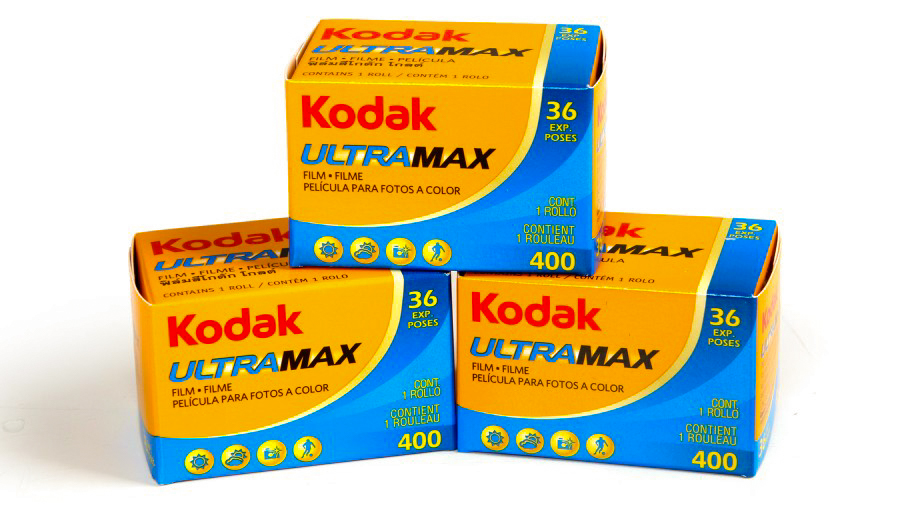
Kodak UltraMax 400
Specifications
Reasons to buy
Reasons to avoid
This is one of the most widely-available color print films available today - with an ISO400 speed that makes it a sensible choice for a wide variety of subjects. The film has a wide exposure latitude; this is particularly useful when using this with old cameras where you can't guarantee the metering - or with basic models that have no built-in metering at all. As we have come to expect from Kodak mass-market films, Ultramax offers rich colors and punch contrast that many photographers love.

Kodak ColorPlus 200
Specifications
Reasons to buy
Reasons to avoid
This is a very similar film in terms of looks and uses as Kodak Ultramax - the key difference is that it is a stop slower, with an ISO rating of 200. As such, this is the better choice of the two if you are shooting in bright outdoor conditions - as this should give marginally less grain than its ISO400 sibling. Widely available - and if you shop around this should be more affordable than many other color print films on the market (but do note that 24-exposure rolls can cost as much as a 36-exposure one!).
35mm black and white film
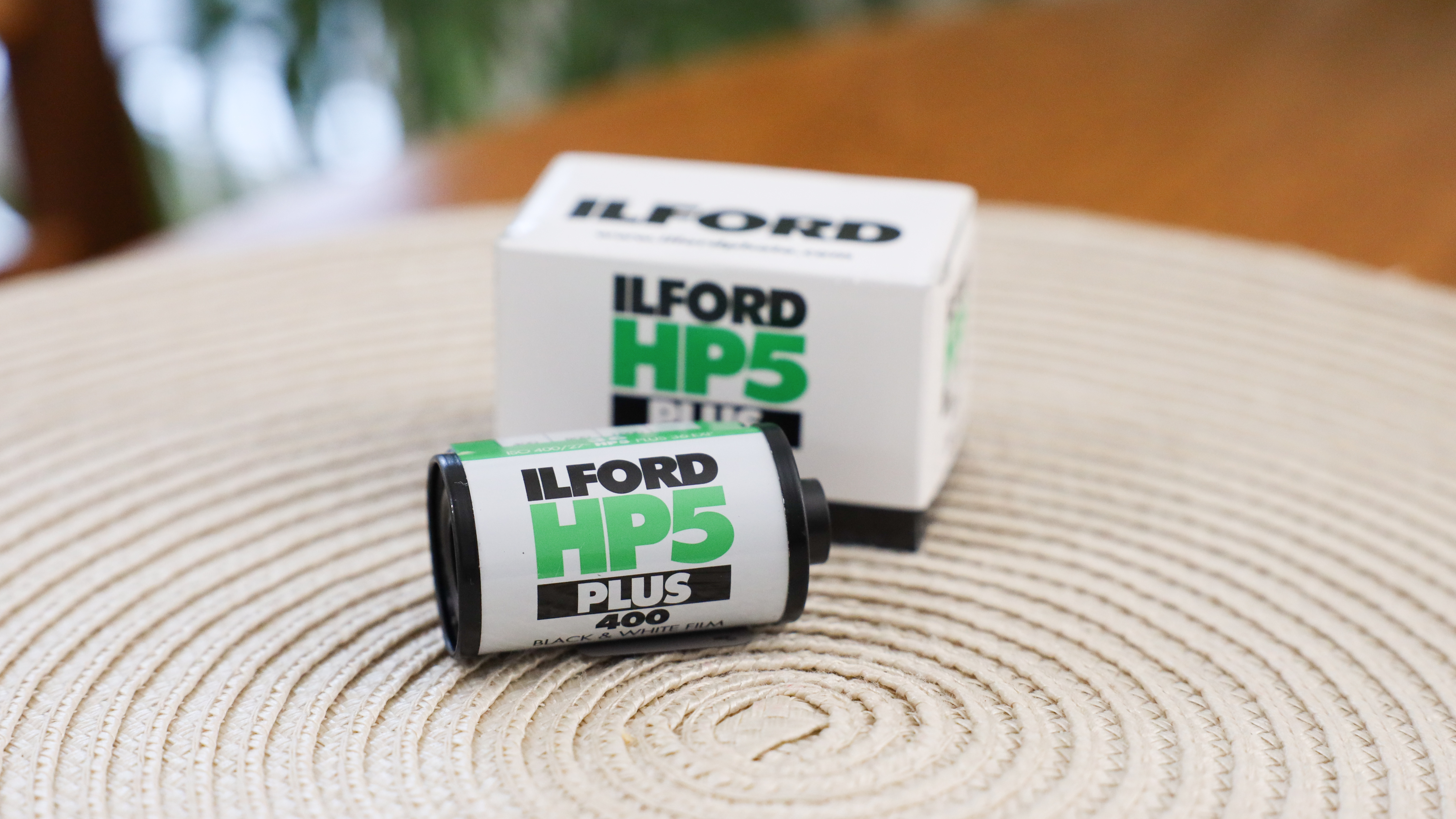
Specifications
Reasons to buy
Reasons to avoid
Ilford's latest version of its classic fast film can be developed in traditional black-and-white chemistry. It is a great all-round film, suitable for those who just want to try monochrome – or for those who are looking for a film that will respond well to push processing for lowlight use.
Read our full Ilford HP5 Plus review

Kodak TRI-X 400
Specifications
Reasons to buy
Reasons to avoid
What can you say about Kodak Tri-X? Made famous by a generation of documentary and war photographers, it's pretty tolerant of exposure variations and push/pull processing and produces strong gritty images with good detail rendition. Maybe a bit rough and ready for today's tastes, but it still has 'the look'.

Specifications
Reasons to buy
Reasons to avoid
Ilford's XP1 'chromogenic' film caused quite a stir when it first appeared, offering black and white photographers the exposure latitude and easy lab processing of color negative film, with smoother, finer grain than other ISO 400 mono films. The updated XP2S is still an interesting option for 35mm black and white fans who like latitude and not grain!

Lomography Lady Grey
Specifications
Reasons to buy
Reasons to avoid
Lomography is one of the main driving forces behind the film photography revival. And as well as producing its own range of beautifully-designed Lomo cameras, it also has a range of films too. This black-and-white film has been given a twist with imaginative branding – and is sold in three-roll packs.
35mm transparency film

Fujifilm Velvia 50 135 36
Specifications
Reasons to buy
Reasons to avoid
Velvia has gained a reputation as the world's richest, most super-saturated, and sharpest color transparency film ever. Kodachrome used to carry that crown, but it looks positively restrained by comparison. Not everyone loves Velvia 50's strong colors and contrasts, but it's now gained immortality among Fujifilm's digital Film Simulation modes.
See also Best slide viewers
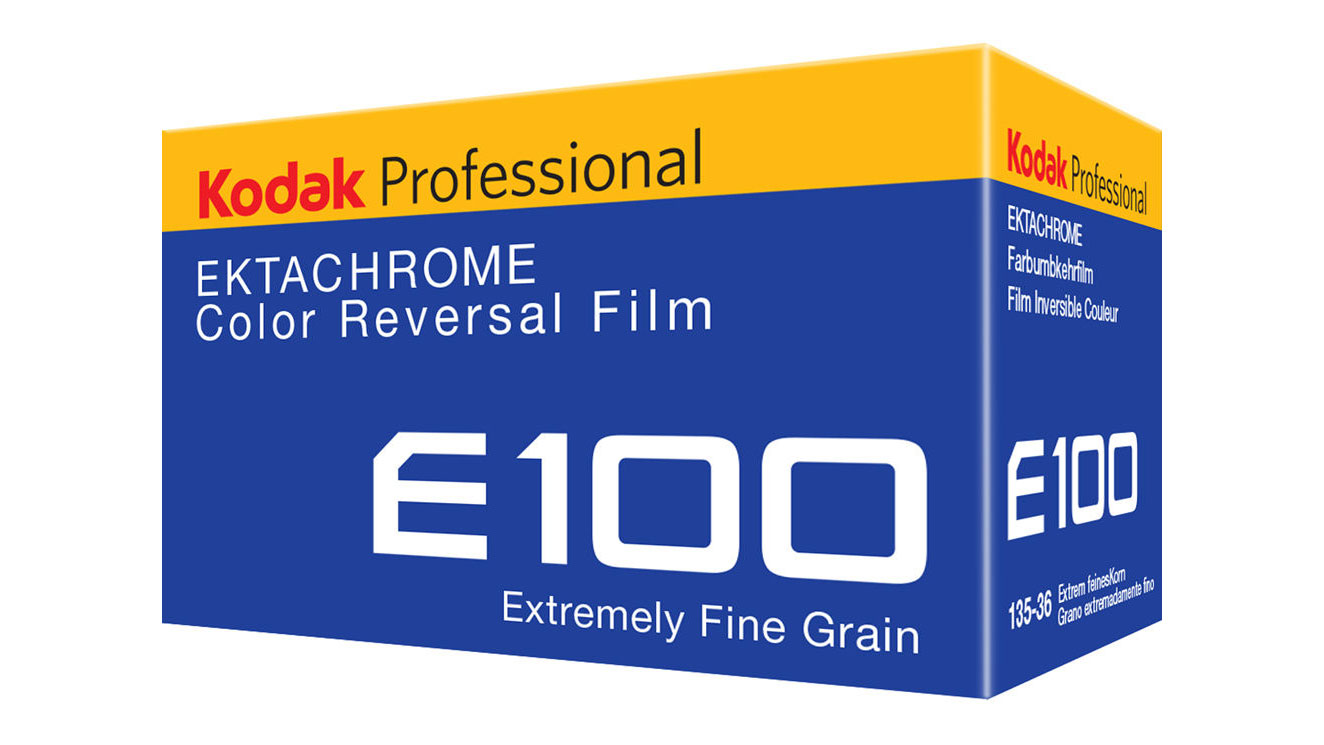
Kodak Ektachrome E100 135-36
Specifications
Reasons to buy
Reasons to avoid
This film has just been revived by Kodak (the new Kodak film-making spin-off following the break-up of the old company). It offers the same ISO rating as Velvia 100, but you might find it has slightly less exaggerated colors. It uses the same generic E-6 transparency processing chemistry, though, so getting your films developed shouldn't be a problem.
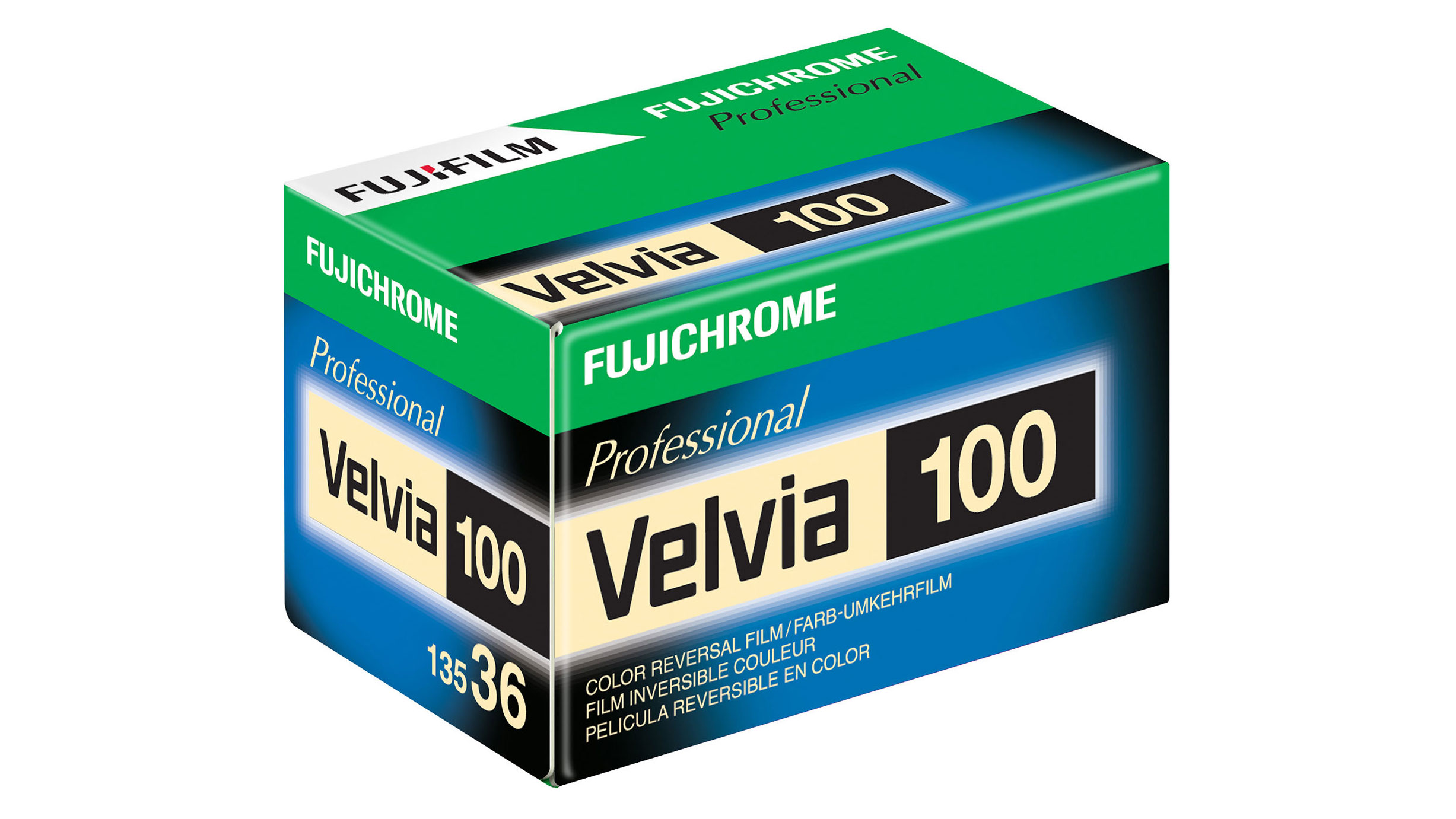
Fujifilm Velvia 100 135 36
Specifications
Reasons to buy
Reasons to avoid
Velvia 100 arrived as Velvia 50's more responsible, more usable sibling. It's one f-stop faster, which makes it a fraction easier to use if the light's not good, and the colors are perhaps a bit more natural-looking than Velvia 50's, but there's not much in it. Both films use widely-available E-6 processing, unlike the other old favorite, Kodachrome.
Best Film: 120 roll film
The medium format film market is surprisingly healthy, and the 120 roll film format is relatively inexpensive. It's versatile too, as some cameras use it for 6cm x 6cm square images, narrower 6cm x 4.5cm negatives or wider 6cm x 7cm or even 6cm x 9cm shots. Again, we've organized these films into color negative, black and white and color transparency films.
Medium format color negative film

Kodak Ektar 100 120 (5 pack)
Specifications
Reasons to buy
Reasons to avoid
This is the same Extar 100 film available in 35mm format, but this time on 120 roll film. Its combination of fine grain (T-Grain), high saturation and sharpness should make it good for all kinds of commercial work, and an alternative to transparency film for landscapes, scenic shoots and travel.

Kodak Portra 160 Professional 120 (5 pack)
Specifications
Reasons to buy
Reasons to avoid
Kodak Portra 160 is a good choice for medium format portrait photographers, being optimised for smooth and natural-looking skintones. If ISO 160 is too slow, there are ISO 400 and ISO 800 versions too, though as ever with faster films, grain becomes an issue much sooner than it does with digital sensors.

Lomography Redscale XR 50200 120 (3 pack)
Specifications
Reasons to buy
Reasons to avoid
You can get Lomography's distinctive yellow/orange/red color shifts in a medium format version of its Redscale XR 50200 film. This could be ideal if you're going for a strong retro vibe and you're experimenting with an old medium format TLR, for example, or one of Lomography's own cameras.

Kodak Portra 800 120
Specifications
Reasons to buy
Reasons to avoid
It is the high ISO rating that is the attraction of this Portrait color negative film. This is particularly useful for those shooting gigs or theater productions - and for sporting events. The film has more noticeable grain than films with an ISO of 400 or slower - so should only be used for subjects where a long exposure or a tripod are not an option.
Medium format black and white film

Ilford FP4 Plus 120
Specifications
Reasons to buy
Reasons to avoid
Ilford FP4 Plus is an evolution of a film that's been a favourite among scenic photographers for decades. It's an all-rounder, offering reasonable speed, good contrast and definition and pretty fine grain – though its characteristics will depend on which of many available developers you use with it.
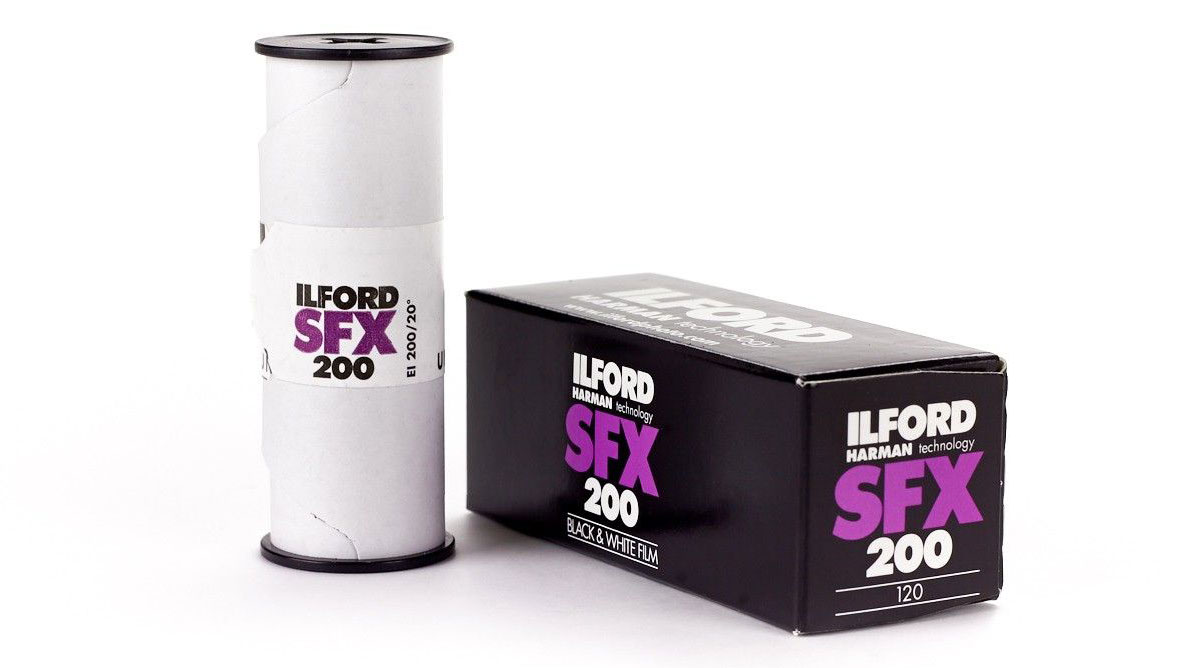
Ilford SFX200 120
Specifications
Reasons to buy
Reasons to avoid
The effect isn't quite the same as Kodak's long-gone HIE infra-red film, but Ilford SFX200 does have extended red sensitivity and, when used with a deep red filter, can produce attractive infra-red images. It's easier to load and handle than Kodak's film, too, needing no special handling precautions. It's worth noting that although this film is still available at some retailers, it has now been discontinued by Ilford so it won't be around forever.
Medium format transparency film
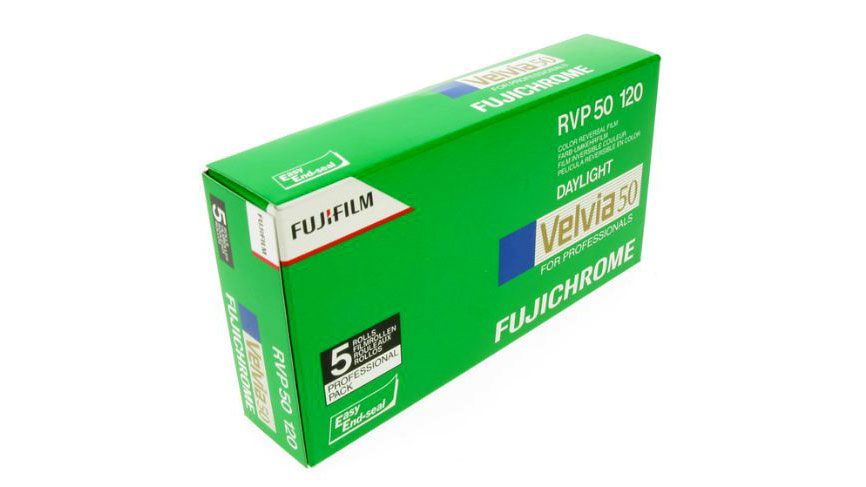
Fujichrome Velvia 50 120 (5 pack)
Specifications
Reasons to buy
Reasons to avoid
At 50 ISO you're going to want to use a tripod to shoot with Velvia 50. Although more commonly known as 35mm slide film, it's also available in 120mm medium format film as packs of five. The 35mm version is rather expensive but the medium format version doesn't seem like bad value at all.
Best film: Best sheet Film
If you thought that large format film was scarce by now, you'll be pleasantly surprised! Again, there are more films out there than we have space to list, so we've picked a few highlights to give you a flavor of what you can get. Processing sheet film is trickier than with smaller formats, but we figure if you've got the dedication and skill to handle a large format camera you're not going to be daunted by the processing.
We've picked the 'universal' 5 x 4-inch format for our buying links, but note that may of these films are available in larger sizes too, up to 10 x 8 inch and beyond! Be aware that while large format film is easy enough to get in the US, you might have to resort to some international shopping in other territories.
Color negative sheet film

Kodak Portra 160 4" x 5" (10 Sheets)
Specifications
Reasons to buy
Reasons to avoid
Large-format portrait photographers have a ready-made film in Portra 160. There are ISO 400 and 800 versions too, but if you're working with a large format camera you're hardly likely to be running around taking handheld shots via available light, so the ISO 160 version looks the best best for quality.
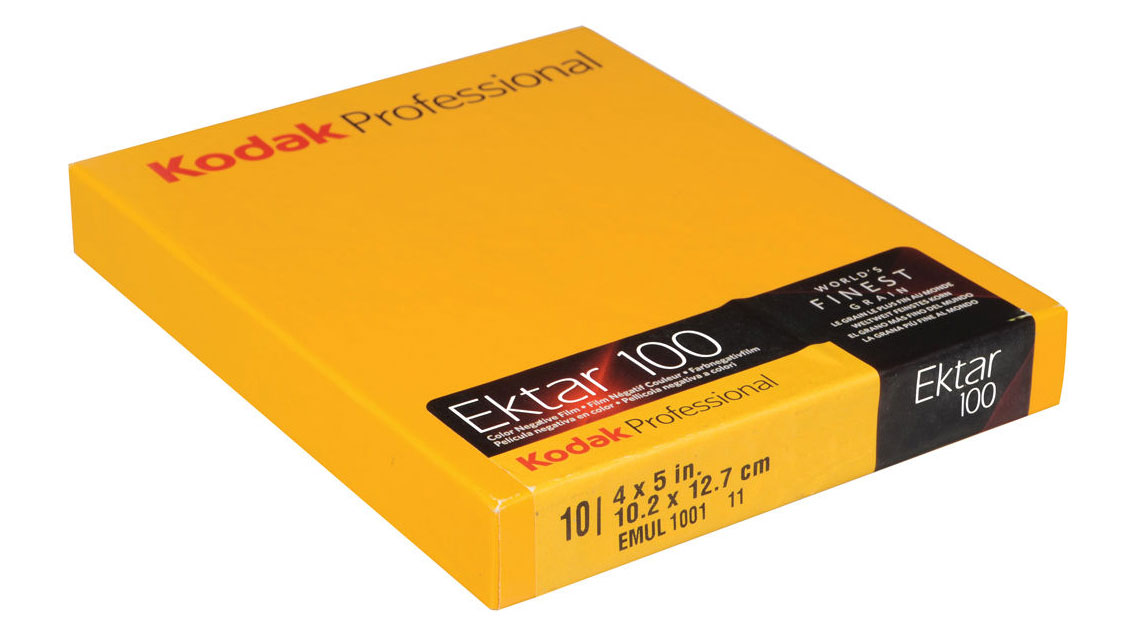
Kodak Ektar 100 5 x 4" (10 sheets)
Specifications
Reasons to buy
Reasons to avoid
Kodak's fine grain color negative film with high saturation and sharpness is available in large format sheet film sizes too. With the advent of digital imaging and tools for color negative film masking, large format photographers are not necessarily restricted to just transparency or black and white film.
Black and white sheet film
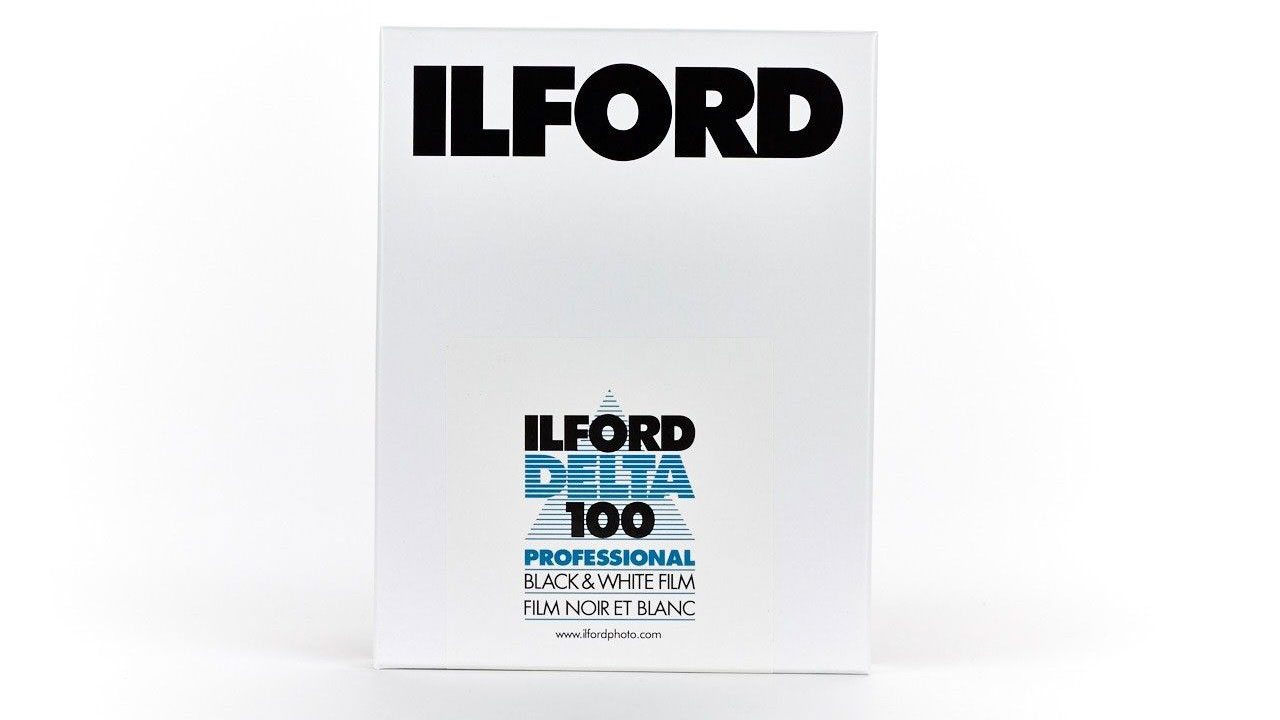
Ilford Delta 100 Professional 4" x 5" (25 Sheets)
Specifications
Reasons to buy
Reasons to avoid
Ilford Delta 100 comes in sizes from 35mm through medium format and right up to sheet film size. The Delta range is like a more modern, finer-grained replacement for Ilford's classic black and white films like FP4, though many photographers still prefer the look of the older product and you can still buy both.

Ilford FP4 Plus 4" x 5" (25 Sheets)
Specifications
Reasons to buy
Reasons to avoid
This is the same FP4 Plus offered in medium format and 35mm sizes, though when used in large format cameras its fine grain pattern will be far less visible and you can concentrate instead on its tonal qualities. You have a choice of developers, including Ilford ID11, Kodak D-76) the same thing or various liquid concentrates.

Kodak Professional T-Max 100 4" x 5" (10 Sheets)
Specifications
Reasons to buy
Reasons to avoid
Kodak Professional T-Max 100 is like the Kodak equivalent of Ilford's Delta 100 film, boasting very fine grain, thanks to Kodak's T-Grain technology. In fact, Kodak says it's the finest-grain film of its speed in the world. Yes, another one. Don't worry, this was what they argued about in the days before autofocus speed comparisons.

Kodak Professional Tri-X 320 4" x 5" (10 Sheets)
Specifications
Reasons to buy
Reasons to avoid
Interestingly, the large format Tri-X is rated at a slightly lower speed than the 35mm version. It's recommended for portraits, indoor photography and situations with high brightness ranges – this is a classic virtue of faster black and white films that can often offset their increased grain for pictorial photography.
How to choose the best film
Film photography falls into three main categories: color negative film, black-and-white negative film, and transparency (slide) film.
Color Negative Film – This is one of the most widely used types of film, available at specialist camera stores as well as online retailers like Amazon. Developed using the C-41 process—offered by nearly all film labs—it’s an excellent choice for digitization, as it easily accommodates the orange mask and negative tones inherent to color film.
Black-and-White Negative Film – Often considered a more artistic choice, black-and-white film is a favorite among film enthusiasts. One of its biggest advantages is that it can be developed at home, making it popular with students and those who enjoy the hands-on process of film development. However, home processing requires more effort than simply sending it to a lab.
Transparency (Slide) Film – Once a top choice for professional photographers, slide film produces direct positives rather than negatives, eliminating the need for an intermediate printing stage that could degrade quality and add costs. In the past, it was a go-to for submitting work to editors and picture libraries. While it’s less common today, a selection of slide films is still available. Modern transparency films are developed using the E-6 process, which is still widely offered by labs.
How we test film
At Digital Camera World, many of our reviewers and other contributors have been shooting since the heyday of film, so we're more than prepared to lend our critical eye to analog photography kit as well as digital. When we test film, we do exactly what you would expect – load it up into a film camera and shoot a few rolls. We assess the film's colour palette, consistency, dynamic range, grain and tolerance for over/underexposure. We shoot a variety of different subjects – human, vegetable, animal and mineral – to get a sense of how the film performs in different situations, and will generally do our shooting at the manufacturer's recommended box speed. Learn more about how we test and review at Digital Camera World.
FAQs
What types of film camera are there?
You can read our massive best film cameras guide to find out more, but generally they split into three types: 35mm, medium format and large format cameras. 35mm cameras are the most common, so that's what we'll start with, but medium format cameras are popular too as they offer better quality from their larger negatives and easier high-quality scanning with a flatbed scanner.
Large format cameras are specialized tools used by particularly dedicated photographers. The cameras are expensive, unwieldy and more complex to set up. The film is supplied in sheets and has to be pre-loaded into holders for swapping plates out in the field. Every exposure is an occasion, but that's part of the charm (that and the extraordinary image quality) for fans of large format cameras.
Why do people still shoot film?
There's been a resurgence in film photography in recent times. It's not just experienced or traditional film shooters who are looking to buy analog camera systems and films. Thanks to a rise in the vintage look and analog trends, curious digital shooters are exploring the magic of film photography too.
While the best mirrorless cameras and the best medium format cameras are great pieces of kit offering advanced technologies such as Animal Eye AF, Wifi photo transfer, and built-in HDR modes, the ability to view images instantly takes away any excitement. There's an element of surprise to shooting film that you just don't get with digital photography, something romantic. Sure, it's a practice that definitely takes more patience and understanding than digital photography, but when you get it right the end result is so worth it.
To start with, analog photography is more physical than its modern, digital counterpart. You can actually hear and feel the camera working, from winding on film to hearing the satisfying clunk of the mechanical shutter. Although there are so many different film cameras to choose from, it's not hard to choose the correct film for your camera. After deciding on the right format, you'll also have to think about the aesthetic, which varies in tone and contrast – it's the original equivalent of picking an Instagram filter. Some of the best Fujifilm cameras even come with film simulation modes that are based on some of the best-known films such as Velvia and Provia.
Get the Digital Camera World Newsletter
The best camera deals, reviews, product advice, and unmissable photography news, direct to your inbox!

For nearly two decades Sebastian's work has been published internationally. Originally specializing in Equestrianism, his visuals have been used by the leading names in the equestrian industry such as The Fédération Equestre Internationale (FEI), The Jockey Club, Horse & Hound, and many more for various advertising campaigns, books, and pre/post-event highlights.
He is a Fellow of the Royal Society of Arts, holds a Foundation Degree in Equitation Science, and holds a Master of Arts in Publishing. He is a member of Nikon NPS and has been a Nikon user since his film days using a Nikon F5. He saw the digital transition with Nikon's D series cameras and is still, to this day, the youngest member to be elected into BEWA, the British Equestrian Writers' Association.
He is familiar with and shows great interest in 35mm, medium, and large-format photography, using products by Leica, Phase One, Hasselblad, Alpa, and Sinar. Sebastian has also used many cinema cameras from Sony, RED, ARRI, and everything in between. He now spends his spare time using his trusted Leica M-E or Leica M2, shooting Street/Documentary photography as he sees it, usually in Black and White.
